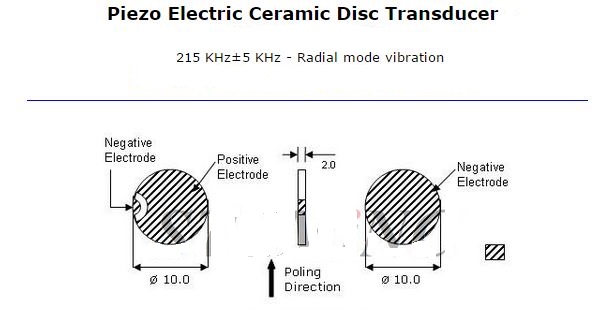I am trying to use a Piezo Electric Ceramic Disc Transducer for ultrasonic sensing measurements for fluid levels. A Piezo Ceramic Disc with a Resonant frequency of 215 KHz or 1 MHz is under consideration. These devices specify a Radial and Thickness mode vibration configuration.

Primary Question: What is Radial and Thickness mode vibration configuration?
Secondary Question: Is Axial and Thickness mode vibration mean the same mode?


Part Specifications
Piezo Ceramic Disc 1 MHz,Thickness mode vibration
- Dimensions: 15mm diameter x 2.1mm thickness
- Resonant frequency fr: 1 MHz±3 %
- Electromechanical coupling coefficient Kt:≥39%
- Resonant impedance Zm: ≤7.6 Ω
- Static capacitance Cs: 900pF±15%@1kHz
- Test Condition: 23±3 °C 40~70% R.H.
- fr, Zm, Kp => Thickness mode vibration
- Cs => LCR meter at 1KHz 1Vrms
Piezo Ceramic Disc R 215 KHz, Radial mode vibration
- Dimensions: 10mm diameter x 2mm thickness
- Resonant frequency fr: 215 KHz±5 KHz
- Electromechanical coupling coefficient Kp:≥60%
- Resonant impedance Zm: ≤6 Ω
- Static capacitance Cs: 450pF±15%@1kHz
- Test Condition: 23±3 °C 40~70% R.H.
- fr, Zm, Kp => Radial mode vibration
- Cs => LCR meter at 1KHz 1Vrms
References:



